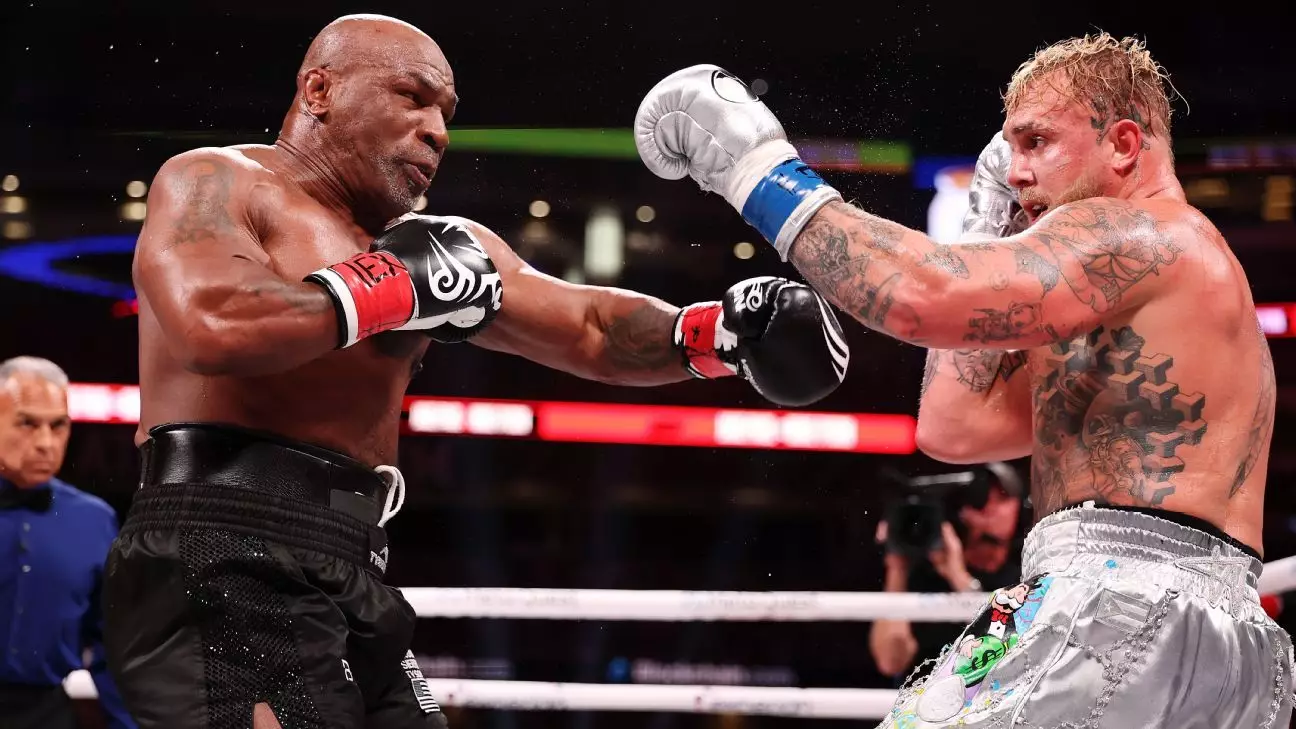In an era where traditional boxers have carved their names into the annals of history through years of disciplined training and competition, Jake Paul represents a paradigm shift that has reshaped the landscape of boxing. The 27-year-old social media influencer has transcended his YouTube origins, claiming a substantial position as one of the sport’s largest draws. His showdown against the legendary Mike Tyson at AT&T Stadium in Arlington, Texas, marked a pivotal moment in boxing, culminating in a unanimous decision victory that sparked massive public interest and attendance.
What’s compelling is not merely the victory itself, but the monumental scale of the event. Drawing over 72,300 fans, Paul vs. Tyson established a record-breaking gate of $18.1 million, solidifying Paul’s status as more than just a novelty act. His ability to attract such a massive audience reflects a significant shift in how boxing events are perceived and consumed, proving that the sport can still thrive on unexpected platforms.
The event set numerous records, such as the highest-grossing gate for a combat sports event outside Las Vegas and the largest attendance figure for such an event in U.S. history. This reflects a critical evolution in the business of boxing, where traditional venues and fighters are no longer the sole contributors to revenues. Instead, the New Age of boxing, fueled by social media engagement and celebrity culture, has emerged as a potent marketing force.
Moreover, the event was not solely about Paul and Tyson; it also featured a co-main event where Katie Taylor faced off against Amanda Serrano in a competitive bout that ended in a controversial split decision. This dual attraction created a multifaceted narrative that appealed to various demographics, showcasing that boxing can generate broad appeal when it incorporates diverse narratives and figures from different backgrounds.
Another noteworthy aspect of the event was Netflix’s venture into live sports. Despite facing streaming challenges, the event captivated 60 million households, which is remarkable for any live sporting occasion, particularly for a platform primarily known for pre-recorded entertainment. This successful foray into live events not only highlighted the evolving avenues for sports broadcasting but also symbolized a shift in how audiences engage with sporting events, marrying traditional athleticism with modern technology.
This monumental success prompted significant ramifications beyond boxing; Netflix’s stock saw a boost as investors recognized the potential of live sports as a profitable venture. With plans for future collaborations incorporating high-profile performances and events, including a Beyoncé halftime show during an NFL game, it symbolizes where the future of sports entertainment lies—at the intersection of traditional events and broadening digital accessibility.
Jake Paul’s impact on boxing is emblematic of a broader transformation within the sport. His capacity to draw crowds and generate revenue alongside traditional athletes like Mike Tyson illustrates that the definition of a “real” boxer may need re-evaluation. With the convergence of celebrity culture, cutting-edge streaming technology, and innovative promotional strategies, boxing is entering an exciting new chapter—one that promises to amplify its global reach and appeal. The focus now shifts to how this trend will sustain itself and evolve in an ever-changing sports landscape.


Leave a Reply